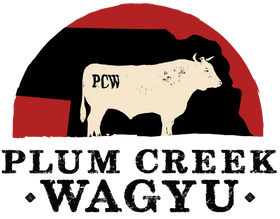Wagyu beef is now synonymous with luxury, renowned for its exquisite marbling, tenderness, and deep flavor. However, the journey of Wagyu cattle from their origins in Japan to becoming a global symbol of fine dining is a rich and fascinating story that spans centuries. From ancient farming practices in Japan to today's worldwide appeal, Wagyu beef has captured the hearts (and taste buds) of food lovers everywhere.
Ancient Beginnings: The Roots of Wagyu in Japan
Wagyu cattle have a long history in Japan, dating back over 2,000 years. Originally used as draft animals in agriculture, these cattle were prized for their strength and endurance. However, their significance shifted in the early 1800s when Japan began selective breeding practices to improve meat quality. The name "Wagyu" itself translates to "Japanese cow" ("wa" means Japan and "gyu" means cow), and over time, farmers perfected methods to create the distinctive marbling and tenderness for which Wagyu is known today.
Isolation and Preservation of Wagyu Breeds
Japan's strict isolationist policies during the Edo period (1603–1868) kept the country's cattle breeds pure. This period of isolation helped preserve the genetic integrity of Wagyu cattle, laying the foundation for the highly prized beef we know today. Four main Wagyu breeds emerged: Japanese Black, Japanese Brown, Japanese Shorthorn, and Japanese Polled. Among these, Japanese Black is the most common and produces the famous beef that is now exported globally.
The Opening of Japan: Wagyu Goes Global
In 1868, with the end of Japan's isolation during the Meiji Restoration, foreign cattle breeds were introduced to Japan, and crossbreeding became common. However, in the 20th century, Japan recognized the superior qualities of their native breeds and imposed regulations to maintain pure Wagyu bloodlines. By the mid-20th century, Wagyu cattle had become a prized delicacy in Japan, but it wasn't until the 1970s that the first Wagyu cattle were exported to other countries.
Wagyu’s Arrival in the United States
The first Wagyu cattle arrived in the United States in the late 1970s, sparking interest among American ranchers and chefs alike. While the initial exports were limited, the demand for this unique beef steadily grew. American breeders soon began to cultivate their own herds, using a combination of Japanese breeding techniques and local agricultural practices. This led to the creation of "American Wagyu," a hybrid breed known for its tenderness and marbling, though with slightly different characteristics than pure Japanese Wagyu.
A Global Icon of Luxury Beef
Today, Wagyu beef is enjoyed in fine dining establishments around the world, from New York to Tokyo to Paris. It has become the gold standard for premium beef, celebrated for its delicate flavor, buttery texture, and melt-in-your-mouth tenderness. Wagyu beef's global appeal is fueled by its unique production methods, with cattle often raised with the utmost care—receiving specialized diets and stress-free environments to ensure top-quality meat.
Whether you’re enjoying A5-grade Japanese Wagyu or a premium cut of American Wagyu, each bite is the culmination of centuries of breeding, farming, and culinary expertise. What began as a prized asset in Japanese agriculture has now become a worldwide phenomenon, representing the pinnacle of beef production and gourmet dining.
The Future of Wagyu Beef
As demand for Wagyu beef continues to grow, ranchers across the globe are working to maintain the high standards that have made Wagyu so desirable. New markets are emerging, and the global fascination with Wagyu shows no signs of slowing down. The meticulous care taken in raising these cattle, combined with their rich genetic heritage, ensures that Wagyu beef will remain a symbol of luxury and refinement for years to come.
The journey of Wagyu cattle from Japan to the world is a testament to the dedication of farmers, breeders, and chefs who have kept the tradition alive. Today, as you savor a tender cut of Wagyu, you’re experiencing a product that has crossed continents and cultures, bringing the taste of Japan’s finest to tables around the globe.
Related Posts
Sustainability in Wagyu Ranching: How Plum Creek Wagyu is Committed to the Environment
Explore how Plum Creek Wagyu is committed to sustainability with practices like rotational grazing, water conservation, humane treatment of cattle, and more. Learn about our efforts to produce high-quality beef while protecting the environment.
Wagyu Beef vs. Angus Beef: A Flavor Showdown
Discover the differences between Wagyu beef and Angus beef in this comprehensive showdown. Learn about flavor, texture, and the overall eating experience to determine which premium beef is right for you.
Wagyu Beef Recipes for Every Season: From Summer Grilling to Winter Braising
Explore seasonal Wagyu beef recipes perfect for any time of the year. From summer grilling to cozy winter braises, discover easy and delicious ways to incorporate premium Wagyu into your meals.
Health Benefits of Wagyu Beef: Why It's a Premium Choice
Discover the health benefits of Wagyu beef, from its heart-healthy monounsaturated fats to its higher levels of omega-3 fatty acids and CLA. Learn why Wagyu beef is a premium choice for those seeking a flavorful yet healthier alternative to traditional meats.
Pairing Wagyu Beef with Wines: A Guide to the Perfect Match
Discover expert tips on pairing Wagyu beef with the perfect wines. From Ribeye to Filet Mignon, explore the best wine matches to elevate your dining experience and make every bite of Wagyu beef unforgettable.
The History and Origins of Wagyu Beef: From Japan to Nebraska
Explore the rich history of Wagyu beef, tracing its origins from ancient Japan to the modern-day farms of Nebraska. Learn about the unique breeding practices and cultural significance of Wagyu, and discover how Plum Creek Wagyu brings this exceptional beef to your table.








